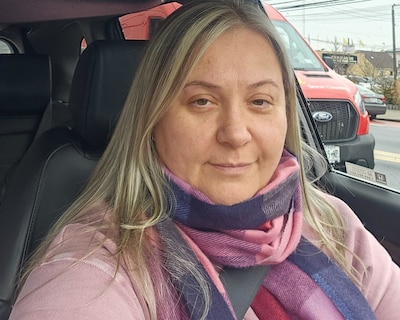Sign up for Chalkbeat New York’s free daily newsletter to keep up with NYC’s public schools.
In his first year on the job, Mayor Eric Adams vowed to fix a glaring inequity in the city’s prekindergarten system. His predecessor’s universal free pre-K program, widely celebrated as a national model, did not provide a seat to every child with a disability, despite a legal requirement to do so.
“The previous ideas of universal 3-K and pre-K did not account for children with disabilities — it was just wrong,” Adams told reporters in December 2022. The mayor promised every child with a disability would have a placement the following spring.
To meet that goal, officials began pouring roughly $134 million into private community organizations that operate the vast majority of the city’s preschool special education seats. It was a shot in the arm for providers that have struggled to keep their doors open due to years of anemic funding and staff churn, allowing them to raise teacher salaries by thousands of dollars to bring them closer to their public school counterparts.
But despite the funding influx, more than 1,100 preschool students with disabilities languished without a placement at the end of last school year. And this coming spring — a year after every child was supposed to have a seat — the Education Department anticipates needing between 866 to more than 1,400 additional seats, according to a new analysis of city data by Advocates for Children, a nonprofit that helps families navigate the special education system.
The problem may soon get worse. The funding Adams used to boost preschool special education programs flowed from one-time federal pandemic relief money that will expire in June — and city officials have not committed to replacing it. Providers say that could lead to a spate of classroom closures, leaving even more children with disabilities without placements at a key developmental stage.
“At some point, I’m going to tell my staff the money that we said was here is not here anymore,” said Jolene Gunther-Doherty, program director for The Guild for Exceptional Children, which operates a special education preschool program in Brooklyn. The additional city funding helped her program boost some teacher salaries from $48,000 a year to just over $68,000 a year, raises that would be reversed if the funding is not renewed.
“I may not get all the resignation letters the next day, but I might get them [in] mid-July or the beginning of August,” she added. “That’s when you begin to say you can’t keep the doors open.”
Teacher recruitment remains a challenge even with higher salaries
Preschool special education programs have long been the most neglected part of the city’s early childhood system.
The state provides a significant chunk of the providers’ budgets and officials approved flat or anemic funding for many years, below increases for traditional public schools (officials approved more generous increases during the last two years). As a result, teachers in the sector are often paid tens of thousands of dollars less than their peers in other schools, leading to high turnover and vacant classrooms, providers said.
Community organizations that operate general education preschool seats, the cornerstone of former Mayor Bill de Blasio’s universal pre-K program, faced a similar funding disparity. After years of advocacy, those providers won big raises for their educators that brought them closer to their public school peers. But the special education teachers were left out, cementing their status as the lowest paid teachers in the city despite serving a high-need population.
Adams’ plan was designed to help fix that problem, providing extra funding to 86 providers to boost salaries closer to the minimum wages enjoyed by public school teachers, lengthen their school days from five hours to 6 hours and 20 minutes to match the district’s preschool schedule, and provide a slew of training and support.
The money is helping operators like HeartShare, which runs four preschool special education programs across Queens and Brooklyn. The organization lengthened the school day and increased many teacher salaries from about $50,000 a year to $68,652 a year, bringing them closer to the starting salary of certified teachers with a master’s degree in the city’s public schools. Teacher assistant wages increased to about $35,000 annually.
Carol Verdi, executive vice president of education services at HeartShare, said raises helped keep staff from leaving and enabled her to hire teachers for two classrooms that had been sitting empty because she couldn’t find anyone to run them.
“For retention, it was great,” Verdi said of the funding boost. “For recruitment, it helped a little bit.”
But strong incentives for teachers to work elsewhere remain. Under the new contract negotiated by the city’s teachers union, public school educators recently notched raises, leaving those in community-based pre-K classrooms below the new minimums. And for teachers with years of experience, they can earn thousands more by jumping to a public school.
Even with the recent salary boost for community organizations, Verdi still has seven classrooms she can’t find teachers for despite plenty of demand from families. “Our phone rings off the hook for seats,” Verdi said. “There are children out there in need.”
Sema Atilgan, who has worked at HeartShare for roughly two decades, said she has often considered leaving and briefly took a job at a public school in 2006. But she loves working with preschool students with disabilities, especially the feeling when students arrive with limited speech skills and leave the program speaking whole words.
“That gives me a lot of not only excitement to go forward ... but just gratitude,” said Atilgan, who has worked as a teacher and special education coordinator at the organization’s preschool program in Howard Beach, Queens.

But her salary would rise by more than $30,000 a year if she left for a public school teaching position, an enticing boost. Plus, she’d have a more generous benefits package and a summer break; preschool special education teachers in programs like HeartShare work year round. Instead, she’s facing a pay cut of about $3,700 this summer, which would bring her salary below $70,000 annually. That could be the final straw that pushes her into another job.
“If they give us a decrease in our salary there will not only be an uproar but also a mass exodus,” she said, adding that she works a side job on Sundays conducting evaluations for Early Intervention services to help make ends meet. “Who gives money and tries to take it back?”
The temporary nature of the funding took several providers by surprise, especially given Adams’ framing of the new money as a “historical leap forward” that would ensure every child with a disability has a preschool seat.
“We would have advised our providers to really seriously think about this unless the [Education Department] had a plan how to fund it” in the future, said Chris Treiber, who represents preschool special education providers through the InterAgency Council of Developmental Disabilities Agencies, an advocacy group. “If this funding ends, our teachers become the lowest-paid teachers in New York City again.”
Largest gaps are in NYC’s neediest neighborhoods
When the city fails to find a seat for a preschool student with a disability, they often sit at home, or wind up in a program that can’t provide intensive support and services, such as speech therapy, listed on a student’s learning plan.
The impact on the city’s youngest students is significant. A lack of special education services early on can lead to more significant learning deficits later — and increased costs for the city. The gap in seats this coming spring is projected to be highest in some of the city’s poorest neighborhoods, covering a swath of the South Bronx and central Brooklyn, including Brownsville and East New York, according to the Advocates for Children analysis.
“We need to hear a plan for how the city will provide a seat to every child who needs one this year,” said Randi Levine, the policy director at Advocates for Children. “The possibility of 1,400 seats being needed at the end of this year is extremely alarming.”
Nathaniel Styer, an education department spokesperson, said the city exceeded its goal of adding 800 seats by the end of last school year, mostly by helping providers raise salaries to recruit educators for classrooms that were sitting vacant. Still, those additional seats were not enough to meet demand, and officials have not detailed any new efforts to meet the projected gap this spring.
“We expanded access and increased pay for this critical sector at a time when it was suffering due to underinvestment and difficulty hiring staff,” Styer wrote in an email, pointing to “the extremely low base pay rate” offered by the state. “As the need continues to grow, we continue to pivot and shift.”
Bronx mom Diana Benavides struggled to find a special education preschool seat this year for her son Liam, who has autism. The 4-year-old attended a general education preschool program, which couldn’t provide all the support he needed this year, including speech therapy. Plus, his class of 17 students proved overstimulating, and he became much more withdrawn, she said.
“He’s more hesitant to go to school [and] has more separation anxiety,” Benavides said. After securing a new learning plan in November that called for a special education program with a class size of 12, she struggled to find a seat.
Benavides spent hours tracking down and calling roughly 20 programs. “It’s almost like a part-time job just trying to find that information and following up with the schools,” she said. She ultimately found just one program in Manhattan that could meet Liam’s needs, including speech and occupational therapy services on site.
Liam started at the new school this month, though Benavides worries about other children who are languishing at home or whose parents don’t have time to conduct their own exhaustive search.
“The need is just growing, especially coming out of the pandemic,” she said. The lack of seats, she said, “is going to have generational impact.”
Alex Zimmerman is a reporter for Chalkbeat New York, covering NYC public schools. Contact Alex at azimmerman@chalkbeat.org.

